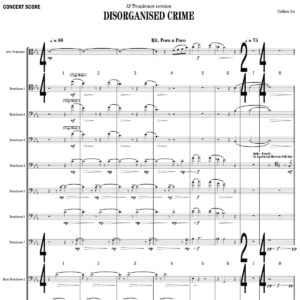More Information
“Four Dances” is an exploration of some of the many and varied dance styles I have encountered while working in my other job as a big band trombonist. Jazz music and dance have a near symbiotic relationship, and, from lindy hops to ballroom championships, many of the most exciting and engaging performances of my career have been for dances. In adapting this music for a more classical style I have taken some familiar melodies, harmonies, and grooves from the jazz tradition, and reimagined them in unexpected ways.
There are four movements, each of which is inspired by a different dance from around the world. All four members of the quartet take turns as the soloist, as follows:
1. “Low Down” – for Angus Butt: this movement features the quartet’s bass trombonist in the melodic role. Imagine an Irish jig, danced by William Walton and Erich Korngold, in which the two dancers can’t quite agree on the metre…
2. “Sentimental Gentleman” – for A: Tommy Dorsey was perhaps the greatest trombonist of the 1940s. His signature high, sweet sound became the benchmark for generations of trombonists, and ballroom dancers around the world enjoyed foxtrotting to his greatest hits. This movement is a tribute to Dorsey – the soloist plays a nostalgic upper register melody that should evoke memories of the swing era.
3. “Kind of Blue Danube” – for B: The Viennese waltz and the jazz waltz have in common the early second beat of the bar as a key part of the groove. I have taken this and added a third element – the modal harmonic language of Miles Davis’ second quintet. It starts out cool, and ends up red hot, with a bluesy ad lib solo.
4. “Trombalera” – for C: Latin American music has been a huge influence on jazz from the beginning, and the various Latin grooves (samba, songo, rhumba, cha cha, tango, etc) make up some of the most popular dance styles. This movement is essentially a samba, where the bass trombone provides the clave pattern for the rest of the quartet to bounce off.








